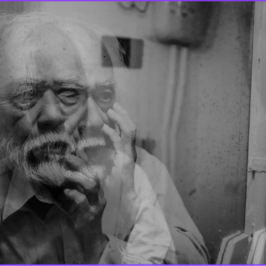
The STOP Technique is a valuable tool used in Dialectical Behavior Therapy (DBT) to help people pause and regulate their emotions effectively and is an effective distress tolerance skill. It stands for the following steps:
- Stop: The first step involves recognizing the need to stop and acknowledging the emotions or thoughts that are present.
- Take a Breath: Once you have paused, take a deep breath or engage in calming breathing exercises to help regulate your emotions.
- Observe: In this step, observe and describe your thoughts, emotions, and physical sensations without judgment.
- Proceed Mindfully: After observing, proceed mindfully, making conscious choices about how to respond to the situation.
Purpose and benefits of using the STOP Technique in DBT
The STOP Technique in DBT serves several purposes and offers numerous benefits:
- Emotional Regulation: By pausing and using the STOP Technique, individuals can effectively regulate their emotions, preventing impulsive reactions.
- Mindfulness: The STOP Technique promotes mindfulness by encouraging individuals to be fully present in the moment, observing their thoughts and emotions without judgment.
- Increased Self-Awareness: Through the process of stopping and observing, individuals gain a deeper understanding of their own emotions, triggers, and patterns of behavior.
- Reduced Impulsive Behavior: The STOP Technique helps individuals interrupt impulsive reactions, allowing them to make more thoughtful and intentional choices.
- Improved Problem-Solving: By taking a moment to pause and observe, individuals can identify alternative solutions and make more effective decisions.
- Enhanced Self-Control: Implementing the STOP Technique empowers individuals to exert greater control over their actions and reactions, leading to healthier and more constructive responses.
The STOP Technique in DBT is a practical and effective tool that individuals can use to manage their emotions and navigate challenging situations with greater skill and resilience.
Need more help? Contact us today to join our DBT group program – we’ve helped over forty thousand people over the last forty years. You can also read more about DBT at the Resource Group here.
Step 1: Stop
In Dialectical Behavior Therapy (DBT), the “STOP” skill is designed to help people pause and regulate their emotions in challenging situations. The first step in this process is recognizing the need to stop and take a break. It’s important to understand when emotions are becoming overwhelming or triggering negative behaviors. By acknowledging the need to pause, individuals can create space between their feelings and reactions, allowing for a more thoughtful and intentional response. Identifying triggers and emotions is also a crucial part of this step, as it helps you gain awareness and understanding of the underlying factors contributing to their emotional responses.
Step 2: Take a breath
Deep breathing exercises to calm the nervous system: Deep breathing is a simple yet effective technique that helps individuals regulate their emotions. By taking slow, deep breaths, individuals can activate the parasympathetic nervous system, which promotes a sense of calm and relaxation. This technique involves inhaling deeply through the nose, holding the breath for a few seconds, and then exhaling slowly through the mouth. Deep breathing can be done anywhere and anytime, making it a convenient tool for managing emotions on the go.
Using breath as a grounding technique: Taking a breath can also be used as a grounding technique in DBT. It involves focusing on the physical sensation of breath entering and leaving the body, which helps individuals stay present and in the moment. By redirecting their attention to the breath, individuals can become more aware of their thoughts and feelings without getting overwhelmed by them. This technique can be particularly helpful in times of distress or when experiencing intense emotions.
Step 3: Observe
In the process of Dialectical Behavior Therapy (DBT), step 3 involves the practice of observing and acknowledging thoughts, emotions, and physical sensations. This step is crucial for individuals to develop a greater understanding of their internal experiences and how these experiences influence their behaviors. By becoming more aware of their thoughts, emotions, and body sensations, individuals can begin to identify patterns and triggers, leading to a greater ability to regulate their emotions effectively. Practicing non-judgmental awareness is also key in this step, as it allows individuals to accept their experiences without attaching judgment or criticism.
Step 4: Proceed mindfully
After taking the time to pause and observe their emotions, individuals practicing the STOP technique in Dialectical Behavior Therapy (DBT) can proceed mindfully to choose a skillful action or response. This step involves considering different coping mechanisms and problem-solving techniques that can help regulate emotions in a healthy way. By approaching the situation with mindfulness and awareness, individuals can make thoughtful decisions that align with their values and goals. This step empowers individuals to take control of their emotional reactions and respond in a way that promotes overall well-being and positive outcomes.
Examples of how the STOP Technique can be used in real-life situations
The STOP Technique is a powerful tool that can help individuals pause and regulate their emotions in various situations. Here are a few examples of how the STOP Technique can be applied in real-life scenarios:
- When feeling overwhelmed at work: Take a moment to STOP, close your eyes, and take a deep breath. Reflect on your thoughts and emotions, and remind yourself to stay calm and focused on the task at hand.
- During an argument with a loved one: Use the STOP Technique to pause before responding in anger. Take a step back, acknowledge your emotions, and choose to respond with empathy and understanding.
- When experiencing cravings or urges: Use the STOP Technique to interrupt impulsive behaviors. Take a moment to STOP, acknowledge the craving, and remind yourself of your long-term goals and values.
Tips for integrating the STOP Technique into daily life
- Start with small moments: Begin by practicing the STOP Technique in moments of low stress or discomfort to build familiarity and confidence in the process.
- Create visual reminders: Place sticky notes or reminders in visible areas to prompt yourself to use the STOP Technique throughout the day.
- Practice mindfulness: Cultivate a daily mindfulness practice to enhance your ability to observe and regulate your emotions in the present moment.
- Seek support: Consider joining a DBT group or working with a therapist who can help guide you in integrating the STOP Technique and other DBT skills into your daily life.
By incorporating the STOP Technique into your daily routine, you can develop greater emotional regulation and improve your overall well-being. Take the time to pause, reflect, and choose how you respond to challenging situations.
The positive impact of using the STOP Technique in emotion regulation
The STOP Technique, a core skill in Dialectical Behavior Therapy (DBT), can be highly beneficial for individuals in regulating their emotions. Some of the key benefits include:
- Increased self-awareness: The STOP Technique helps individuals pause and observe their emotions in the present moment, leading to a greater understanding of their emotional states.
- Enhanced impulse control: By taking a step back and using the STOP Technique, individuals can gain better control over impulsive reactions and make more thoughtful choices.
- Improved distress tolerance: The practice of stopping and acknowledging emotions can help individuals build resilience and better cope with distressing situations.
- Increased self-compassion: The STOP Technique encourages self-kindness and self-acceptance, fostering a compassionate attitude towards oneself.
Recognizing the limitations and challenges
While the STOP Technique can be highly effective, it is important to recognize its limitations and challenges. Some potential limitations include:
- Initial difficulty: Implementing the STOP Technique may be challenging at first, as it requires breaking habitual patterns of reacting to emotions.
- Time commitment: Pausing to use the STOP Technique in the midst of intense emotions may require time and practice to become a natural response.
- Individual differences: Different people may experience varying levels of effectiveness with the STOP Technique, depending on factors such as personal readiness and commitment to the practice.
- Need for guidance: Some may benefit from professional guidance and support to fully understand and implement the STOP Technique in their daily lives. Please contact us today if you feel you could use that extra help.
Overall, while the STOP Technique offers numerous benefits for emotion regulation, it is essential to approach it with patience, perseverance, and a willingness to seek support when needed. Reach out to us today if you feel you need that support, we are here to help.






